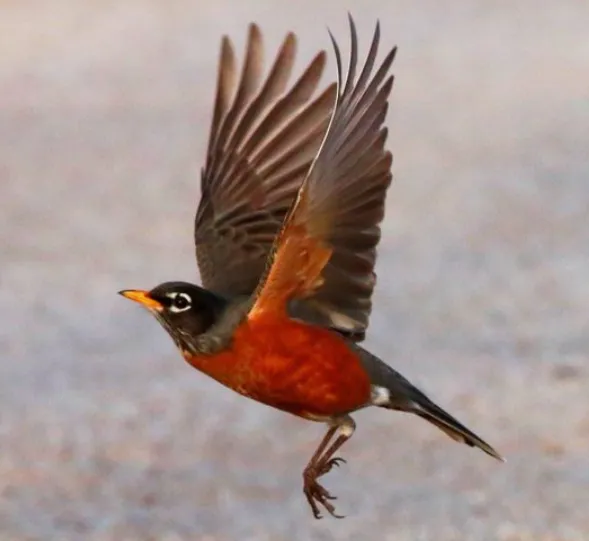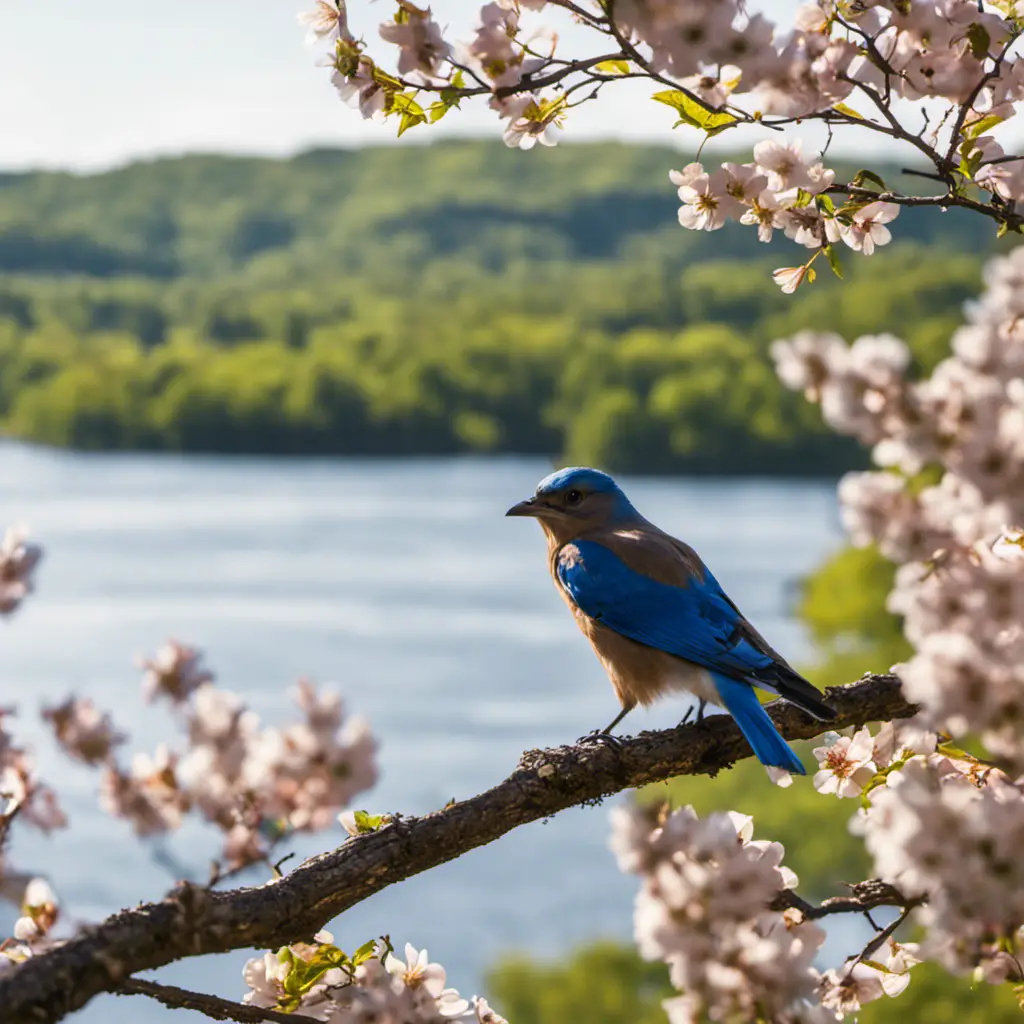We’ll show you the most frequent birds in Nebraska, as well as some of their key statistics. Only reputable sources and an Ornithologist were consulted for the information.
Do you enjoy spending time outdoors in your backyard watching the birds? If so, Nebraska is the perfect place for you! This state is home to a variety of bird species, including some that are unique to this area. In this blog post, we will take a look at some of the most common backyard birds of Nebraska. We will also discuss what makes these birds unique and how you can attract them to your yard.
What is the most common bird in Nebraska?
This list was compiled based on ebird.com, which is determined by genuine bird sightings submitted by the public.
- American Robin (57% frequency)
- Mourning Dove (40%)
- Europes Starlings (35%)
- Northeast Cardinals (34%)
- Blue Jays (34%)
- American grackles (31%)
- House Sparrow (20%)
- Common Graylings (28%)
Facts About Birds in Nebraska:
State bird of Nebraska: Meadowlark
The meadowlark is a plump, short-tailed songbird with a yellow breast and throat. It has a black “v” on its chest and white stripes above its eyes. The meadowlark is found in open fields and prairies across the United States.
How many birds are recorded in Nebraska: there have been 400 different species of birds recorded in the state of Nebraska.
The biggest bird in Nebraska: the whooping crane. It is also the tallest North American land bird.
The smallest bird in Nebraska: the Calliope Hummingbird.
Nebraska National parks: There are five national parks in Nebraska: Agate Fossil Beds, Buffalo Bill Cody, Chimney Rock, Fort Robinson and Homestead.
Most Common Backyard Birds in Nebraska:
American Robin
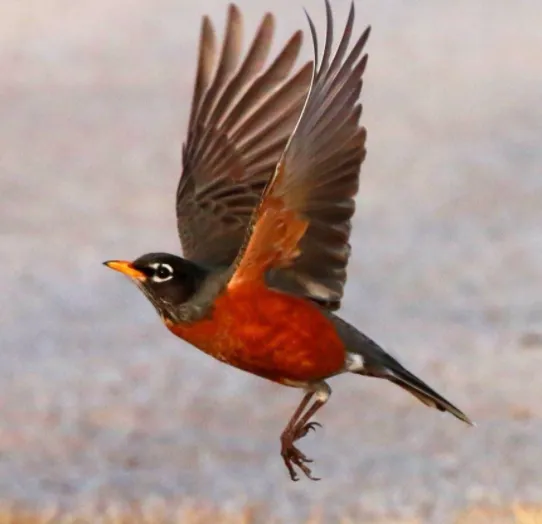
The American Robin is the state bird of Nebraska. These birds are about eight and a half inches long and have a wingspan of about sixteen inches. They weigh between one-and-a-half and two ounces.
American Robins are generally brown birds with reddish feathers on their chest. They have white markings around their eyes and a black beak. These birds are usually found in wooded areas near streams or other sources of water.
American Robins eat insects, earthworms, berries, and fruits. They build their nests in trees and lay between three and five eggs per clutch. Robins are generally active during the day and can often be seen perched on tree branches or flying from one place to another. These birds are known for their beautiful song, which is often described as “cheerful.”
American Robins are common throughout most of the United States. They can be found in Nebraska year-round.

Mourning Doves
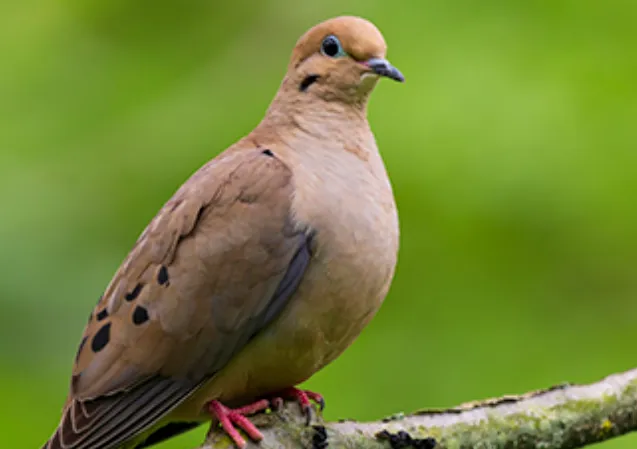
The Mourning Dove is a small, slender bird that is usually gray or light brown in color. They have a long tail and a distinctive black band around their neck. Mourning Doves are very gentle birds and are not known to be aggressive towards people or other animals.
They can be found in many different habitats, including open fields, woodlands, and gardens. Mourning Doves typically eat seeds and insects.
Mourning Doves are one of the most common birds in North America. They are very adaptable birds and can live in a variety of different habitats. If you see a Mourning Dove, chances are it is not alone; these birds often travel in pairs.
Mourning Doves are very gentle and docile birds, and they are not known to be aggressive towards people or other animals. They usually eat seeds and insects.
Mourning Doves make beautiful music with their cooing calls. You can often hear them singing in the early morning or evening hours. These birds are monogamous, meaning they mate for life.
The female Mourning Dove will usually lay two eggs at a time. The eggs are incubated for about two weeks before they hatch. After the chicks hatch, they will stay with their parents for another month or so before they learn to fly and fend for themselves.

European Starlings
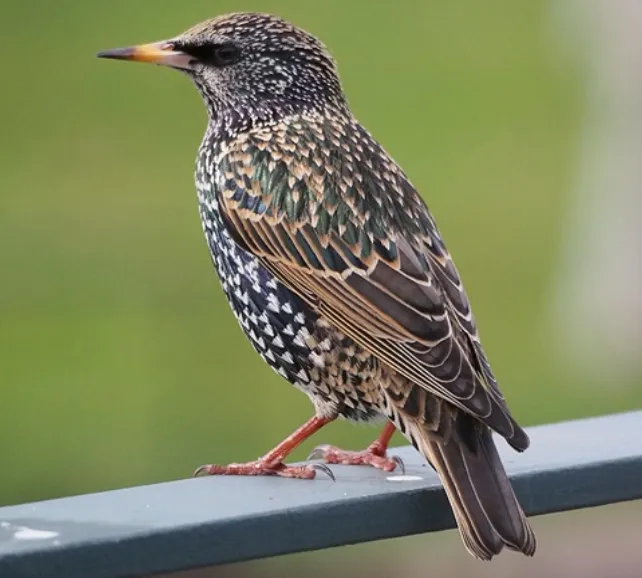
European Starlings are a small, black bird that is common in Nebraska. They have a short, stout bill and characteristic starling flight patterns. European Starlings typically live in close proximity to humans, making their homes in urban areas and along with agricultural land.
These birds feed on a variety of items in the wild, including insects, fruits, and seeds. European Starlings are known to cause damage to crops and other property, making them a nuisance in some areas. Despite this, they are fascinating birds to watch and study.
This means that they make their homes in urban areas and along with agricultural land. Consequently, these birds have a diet that consists of a variety of items including insects, fruits, and seeds.
Unfortunately, European Starlings are also known for causing damage to crops and other property. Although they can be considered a nuisance in some areas, they are still fascinating birds to watch and study.

Northern Cardinals
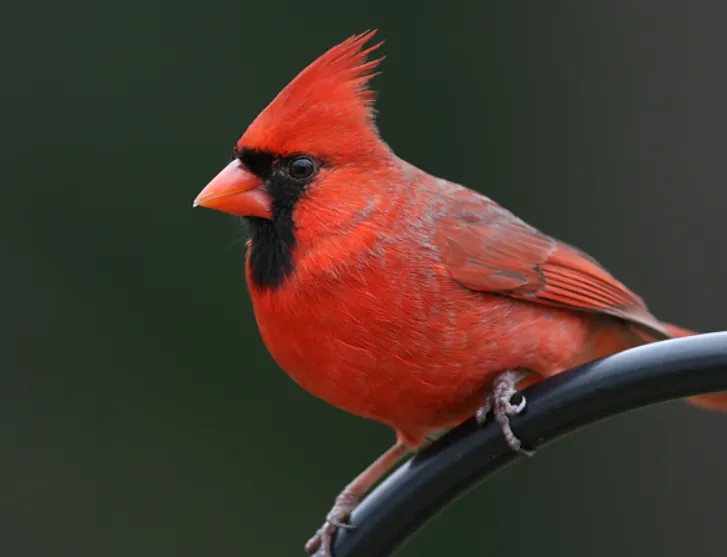
The Northern Cardinal is a medium-sized bird that is found in Nebraska. They have a characteristic red coloration and are one of the most easily identifiable birds in North America. Cardinals are very territorial and will often defend their territory vigorously.
They are also relatively vocal and can be heard singing throughout the day. Cardinals live in a variety of habitats but are most commonly found in wooded areas. They feed on a variety of foods, but their diet consists mostly of seeds and insects.
Cardinals are a popular bird species and are often kept as pets. They are also a common sight at bird feeders. If you live in Nebraska, chances are you have seen a Northern Cardinal at some point!

Blue Jays
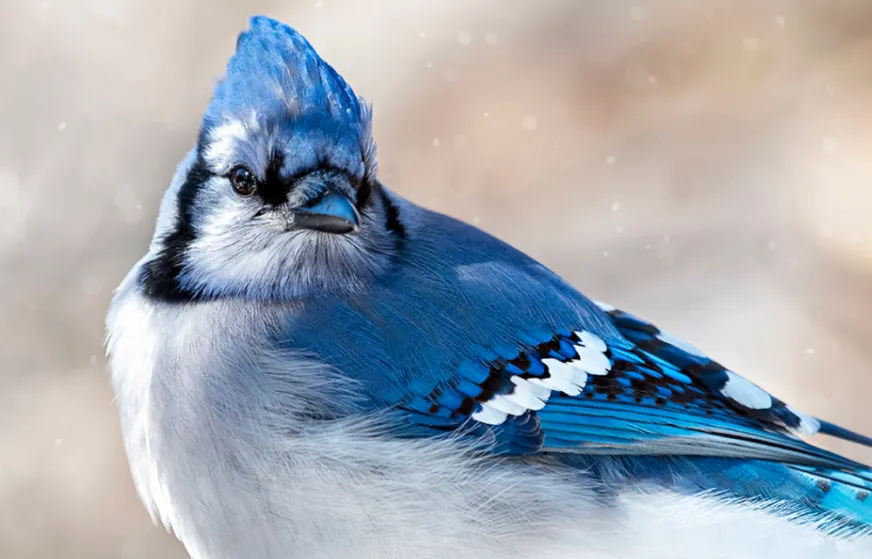
The Blue Jay is a medium-sized bird that has a characteristic blue and white plumage. It is found throughout much of North America, including Nebraska. The Blue Jay is known for its intelligence and playful behavior. It feeds on a variety of foods, such as nuts, seeds, insects, and fruit.
Blue Jays typically measure between nine and twelve inches in length, with a wingspan of around fifteen inches. They are relatively stout birds, with short necks and square tails. Males and females look similar, although the males tend to be slightly larger.
The Blue Jay is an interesting bird to watch. It is known for its playful behavior, such as stealing food from other animals. It is also known for its intelligence, as it is able to learn and remember tasks.
The Blue Jay typically inhabits woodlands, although it can also be found in urban areas. In Nebraska, it is most commonly found in the eastern part of the state. The Blue Jay typically nests in trees, building a nest out of twigs, leaves, and bark.
Blue Jay’s diet consists of a variety of foods, such as nuts, seeds, insects, and fruit. It prefers to eat acorns and other nuts, but will also consume berries, grains, and insect larvae. In Nebraska, the Blue Jay typically feeds on insects in the summer months.

Common Grackle
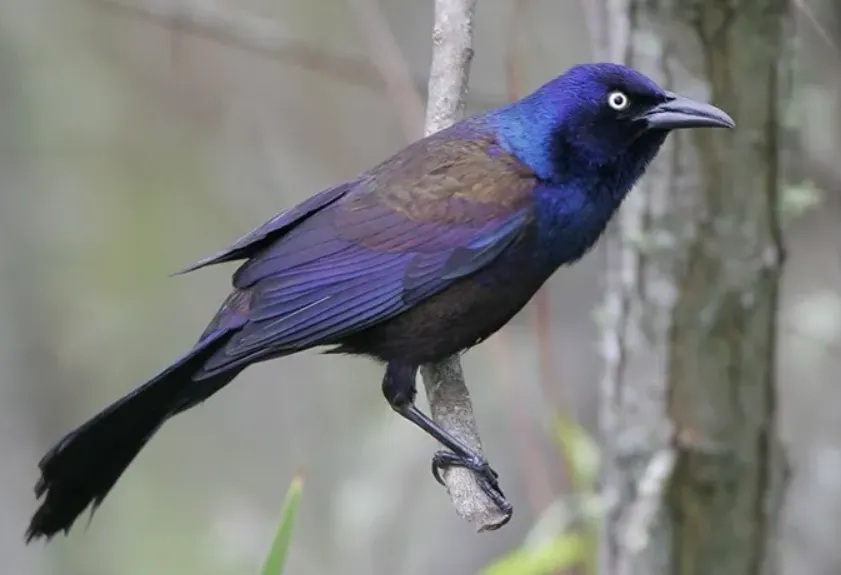
The Common Grackle is a medium-sized blackbird that can be found in Nebraska. They are usually about 12 inches long and have a wingspan of about 18 inches. They have a stout body, a short tail, and a thick bill. The grackles in Nebraska are typically darker than those found in other parts of the country.
Their behavior is rather aggressive and they are known to steal food from other birds. They live in a variety of habitats, including open fields, marshes, and urban areas. Their diet consists mostly of insects, but they will also eat seeds and fruit.
The Common Grackle is a common sight in Nebraska and can be found in a variety of habitats. They are medium-sized blackbirds with a stout body, short tail, and thick bill.
They typically have a wingspan of 18 inches and are about 12 inches long. The grackles in Nebraska are usually darker than those found in other parts of the country and their behavior is rather aggressive.
They are known to steal food from other birds and live in a variety of habitats, including open fields, marshes, and urban areas. Their diet consists mostly of insects but they will also eat seeds and fruit.

House Sparrow
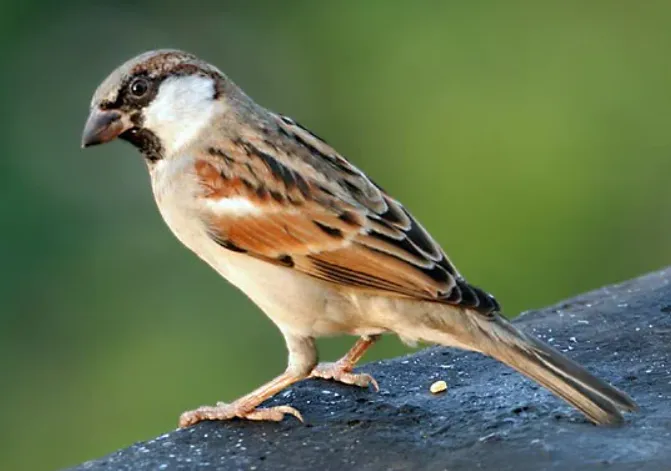
The house sparrow is a small bird with a stout body and short legs. The adult male has grey-brown upperparts, white underparts, and a black throat and breast. The female is similar in appearance but duller in coloration.
Juvenile birds are browner overall. This species ranges in length from about five to six inches long.
House sparrows are very social birds and can be seen in large flocks outside of the breeding season. They are generally quiet but can make a variety of chirps, whistles, and other calls.
These birds are omnivorous, eating both seeds and insects. They prefer to nest in cavities, often using the old nests of other birds.
House sparrows are found in a variety of habitats including urban and rural areas, parks, and gardens.
This species is native to Europe, Asia, and Africa but has been introduced to many other parts of the world including North America. The house sparrow is one of the most common birds in North America and can be found in every state except Hawaii.
It is considered a pest by many people because it often competes with native bird species for food and nesting sites. Despite this, the house sparrow remains a popular backyard birding target due to its easy-to-spot coloration.

Dark-eyed Junco
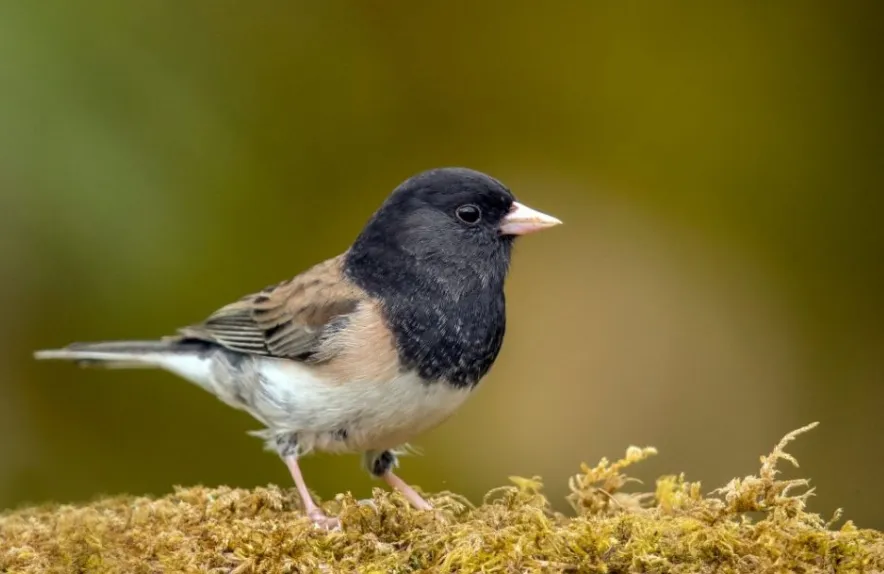
The dark-eyed junco (Junco hyemalis) is a small songbird of the Northern Hemisphere. It is also known as the “snowbird” because it is often seen in winter. The dark-eyed junco has a black head and back with white sides and belly. Its wings are gray with white stripes.
The dark-eyed junco is about six inches long and has a thin, pointed bill. It feeds on seeds, insects, and spiders. The dark-eyed junco is common in Nebraska and can be found in open woodlands, yards, and parks.
The dark-eyed junco is a small songbird of the Northern Hemisphere. It is also known as the “snowbird” because it is often seen in winter. The dark-eyed junco has a black head and back with white sides and belly. Its wings are gray with white stripes.
The dark-eyed junco is about six inches long and has a thin, pointed bill. It feeds on seeds, insects, and spiders. The dark-eyed junco is common in Nebraska and can be found in open woodlands, yards, and parks.
The dark-eyed junco sings a variety of songs, including a simple “chink” call. It is often seen perched on top of a tree or fence post while singing. The dark-eyed junco is a shy bird and will quickly fly away when disturbed.
It builds a simple nest of grasses and feathers in a tree or bush. The dark-eyed junco eats mostly seeds, but also insects and spiders. This small songbird can be found throughout Nebraska in open woodlands, yards, and parks.

House Wren
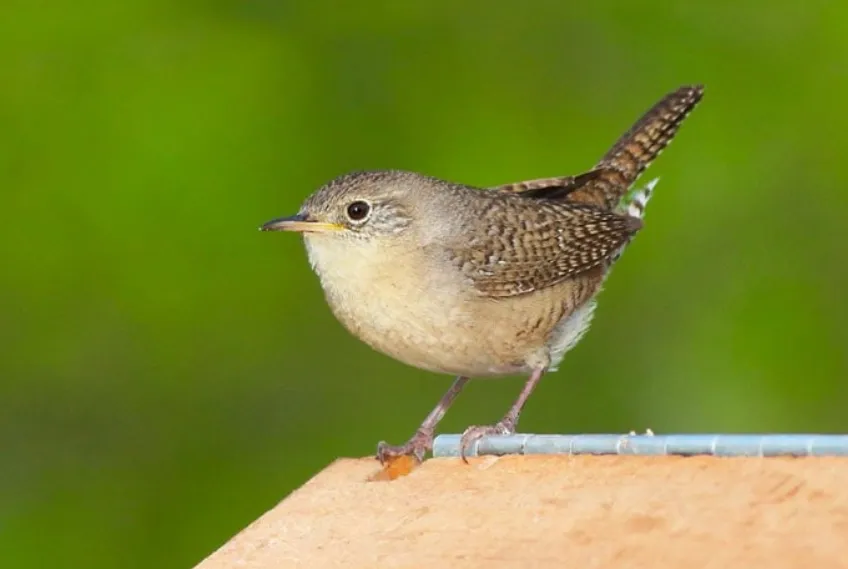
The House Wren is the most common wren in Nebraska. They are about four and a half inches long and have brown upper parts and white underparts.
They have a thin bill, long tail, and dark eyes. House Wrens are very active birds and can be seen hopping around on the ground or perching on branches. They are insectivores and eat a variety of insects, including spiders, caterpillars, and grasshoppers.
They also eat some berries and seeds. House Wrens build their nests in a variety of locations, including bushes, trees, birdhouses, and man-made structures. They typically have four to six eggs per clutch.
These birds are very territorial and will aggressively defend their territory from other birds. House Wrens are year-round residents in Nebraska.
House Wrens are common throughout Nebraska and can be found in a variety of habitats, including open fields, woods, and gardens. They eat a variety of insects, which makes them beneficial to gardeners.
They are also very active, which can be entertaining to watch. These birds are year-round residents in Nebraska and can be found throughout the state.
House Wrens are fun, interesting birds to watch. They are common in Nebraska and can be found in a variety of habitats. They eat a variety of insects, which makes them beneficial to gardeners. They are also very active, which can be entertaining to watch.

White-breasted Nuthatch
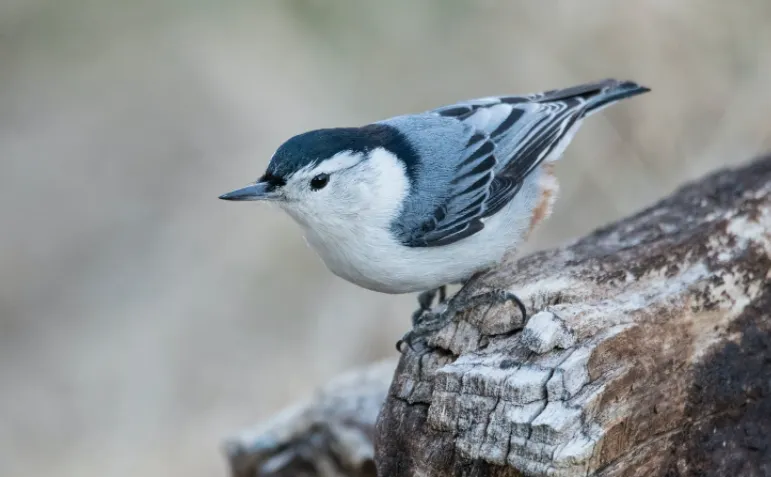
The White-breasted Nuthatch is a small songbird that is found in wooded areas throughout Nebraska. These birds have a characteristic blue-grey head and wings, white underparts, and a long black tail.
They are usually about six inches in length and weigh between 0.25 -0.35 ounces.
Nuthatches are very active birds, and can often be seen climbing up and down tree trunks or branches. They primarily eat insects, but also consume seeds and nuts. Nuthatches breed from April to June, and the female lays between four and six eggs in nests that are typically located in a tree cavity.
The White-breasted Nuthatch is a common bird in Nebraska and can be found in both urban and rural areas. If you’re lucky, you may even spot one at your backyard feeder!

Black-capped Chickadees
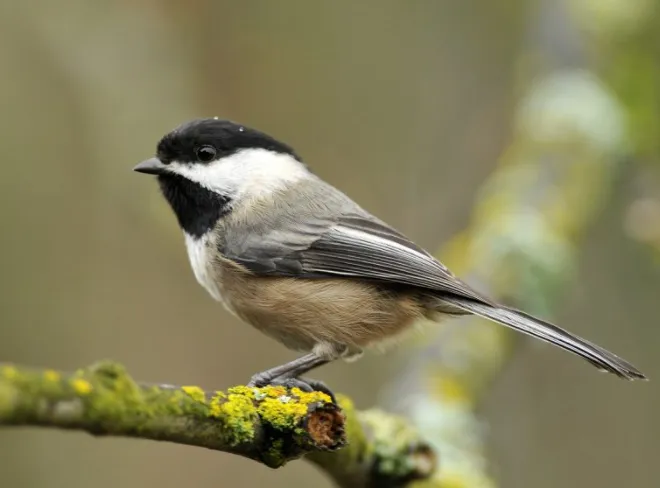
Black-capped Chickadees are small songbirds with black caps and white cheeks. They have gray upper parts and whitish underparts.
Black-capped Chickadees are found in woodlands across North America. In Nebraska, they are most common in the eastern part of the state.
These birds nest in cavities, such as tree holes, and they also use old nests of other birds. Black-capped Chickadees eat a variety of foods, including insects, seeds, and fruit. They are known for their ability to find food in winter when many other animals have trouble finding food. In the summer, they often visit bird feeders.
Black-capped Chickadees are common in Nebraska and can be found in a variety of habitats, including woods, gardens, and parks.
These birds are known for their cheerful song and playful behavior. In winter, they often stay together in flocks to find food.
Black-capped Chickadees are interesting birds that can be observed year-round in Nebraska.

Red-winged Blackbird
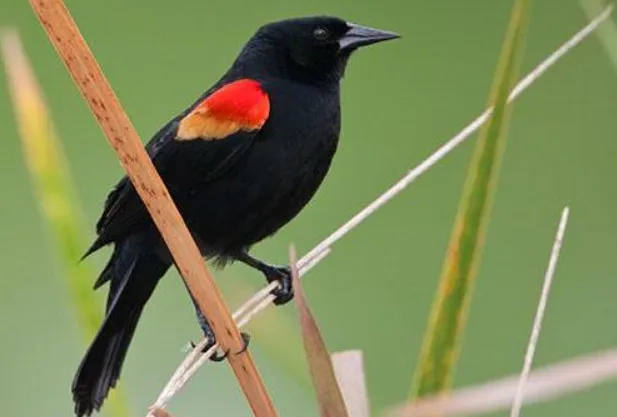
The Red-winged Blackbird is a species of the true blackbird. The adult male has black feathers and striking red epaulets on its wings. Females and immature males have dark brown feathers.
This bird gets its name from the characteristic “red wing” shown in flight or when the bird is at rest and fluffs out its feathers. The Red-winged Blackbird is a medium-sized bird, about the size of a robin. It has a long tail and a stout bill.
The Red-winged Blackbird is one of the most common birds in North America. You can find it in open habitats such as fields, marshes, and wetlands. This bird is also often found near water.
It feeds on insects, spiders, and other small invertebrates. The Red-winged Blackbird is an important bird for farmers because it helps to control insect populations.
The Red-winged Blackbird is a very social bird. It often forms large flocks with other blackbirds. During the breeding season, males establish territories and sing to attract a mate.
The Red-winged Blackbird builds a simple nest out of grasses and other plant material. It lays four to six eggs, which are incubated by the female. Young birds fledge in about two weeks.
The Red-winged Blackbird is a common sight in Nebraska and can be found in many different habitats. It is a fun bird to watch because it is very active and often sings loudly.

American Goldfinch
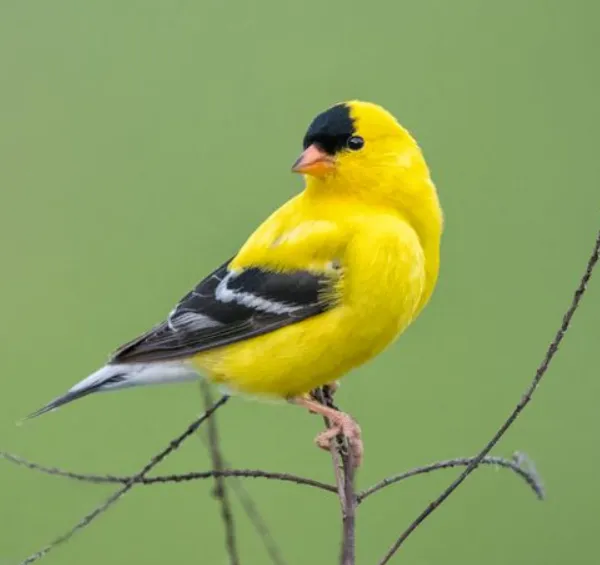
The American Goldfinch is a small songbird that can be found in Nebraska. These birds are about the size of a sparrow and have bright yellow feathers on their heads, wings, and tail. They also have black markings on their wings and tails. Mostly, they have black wings or brown wings.
American Goldfinches are very active birds and love to play in the snow. They are also very curious and will come up to people to see what they are doing. American Goldfinches live in open areas, such as fields and meadows, and eat a variety of seeds. They also enjoy eating insects.

Downy Woodpecker
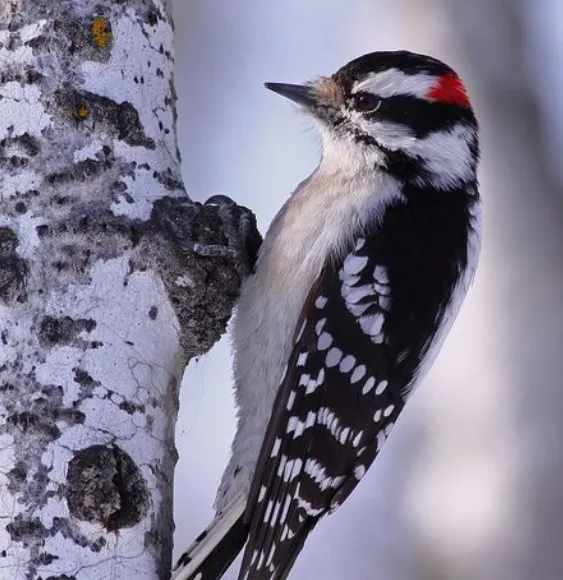
The Downy Woodpecker is a small woodpecker that can be found in Nebraska. They are about six to seven inches long and have black and white feathers.
They have a short, straight bill and a crest on their head. Downy Woodpeckers mainly eat insects, but they will also eat fruit and seeds.
They live in a variety of habitats, including forests, woodlands, and parks. Downy Woodpeckers are very active birds and can be seen climbing up trees or flying around. They are known for their loud “peeping” call.
Downy Woodpeckers are common throughout Nebraska and can be easily spotted by their black and white feathers. They are very active birds and can be seen climbing up trees or flying around.
They mainly eat insects, but will also eat fruit and seeds. Downy Woodpeckers live in a variety of habitats, including forests, woodlands, and parks.

Eastern Kingbird

The Eastern Kingbird is a common bird in Nebraska. It is about six inches long and has a blackhead, white throat, and gray body. The kingbird is known for its aggressive behavior, and it often chases away other birds from its territory.
The kingbird’s diet consists mostly of insects, but it also eats fruits and berries. The Eastern Kingbird usually nests in trees near open fields.
If you see an Eastern Kingbird, you might also see it chasing away other birds or eating insects. These birds are important to farmers because they help control insect populations.
If you have a chance to watch one of these birds up close, you’ll notice its black head and white throat. The Eastern Kingbird is a beautiful bird that is common in Nebraska.
The kingbird is a migratory bird, so it can be found in different parts of the country at different times of the year. In the winter, it can be found in southern states like Florida and Texas.

Barn Swallows

The Barn Swallow is a small songbird with a long, deeply forked tail. They are usually pale blue-gray above and have rusty-brown throats and breasts. Some Barn Swallows in Nebraska may have dark brown upperparts with pale gray underparts.
These swallows are often seen flying low over fields or barnyards, catching insects in flight. They are very agile and can even turn upside down to catch prey.
Barn Swallows typically build their nests out of the mud on the sides of buildings, under bridges, or in barns.
The female lays four to six eggs and both parents help incubate them and feed the chicks. Barn Swallows eat mostly insects, which they catch in flight.
You may see them swooping low over the ground or water to pick up insects.

Brown-headed Cowbird
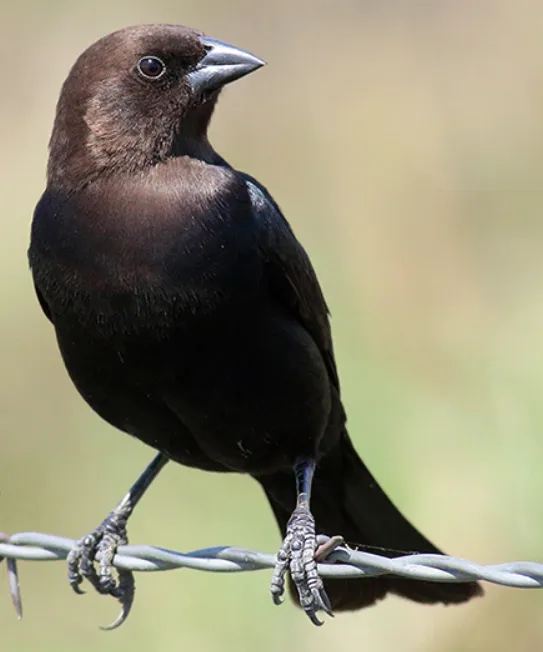
The Brown-headed Cowbird are small birds with chocolate brown heads. Adults are about seven and a half inches long and weigh an ounce.
Both sexes look alike with short thick bills, glossy black plumage (or brown plumage), and pale yellow eyes. The juvenile bird has a grayish head and back with some brown streaks.
This species is a permanent resident in Nebraska, breeding throughout the state. Brown-headed Cowbirds are found in open habitats such as pastures, prairies, agricultural fields, and urban parks and lawns. They forage on the ground or low in trees and shrubs, eating insects, seeds, and fruit.
Cowbirds are brood parasites, meaning they lay their eggs in the nests of other bird species. The female will find a nest, usually while it is being built, and deposit one of her eggs.
She will then return to her own nest and raise her young. The host bird, not knowing the egg does not belong to them, will incubate it along with their own eggs and raise the cowbird chick as their own.
This behavior puts a great strain on the host bird, as they must now care for a much larger chick. The Brown-headed Cowbird is one of the most common brood parasites in North America.
While this species is not currently endangered, its numbers have been declining due to habitat loss. Brown-headed Cowbirds are a valuable part of the Nebraskan ecosystem, and it is important to protect their habitat. If you see a cowbird in your backyard or local park, enjoy watching them as they forage for food.

Song Sparrow
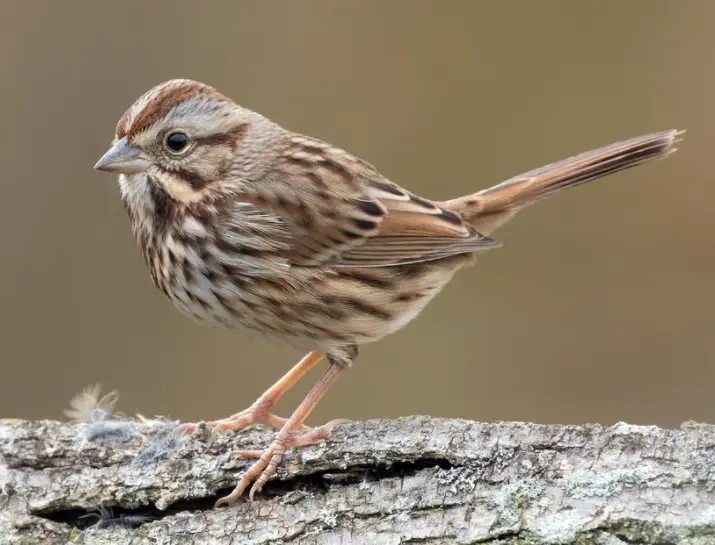
The Song Sparrow is a small bird that can be found in Nebraska. They are characteristic brown birds with white stripes on their head and chest, and they are about six inches long. Song Sparrows are very active birds and can often be seen hopping around on the ground or in trees.
They eat mostly insects, but will also eat seeds and berries. Song Sparrows live in a variety of habitats, including fields, forests, and wetlands. They are common throughout Nebraska.
Song Sparrows are very common birds and can be found in many different habitats throughout Nebraska. They are small birds with characteristic brown and white stripes on their head and chest.
Song Sparrows are active birds that often hop around on the ground or in trees. They eat mostly insects, but will also eat seeds and berries.

American Crow
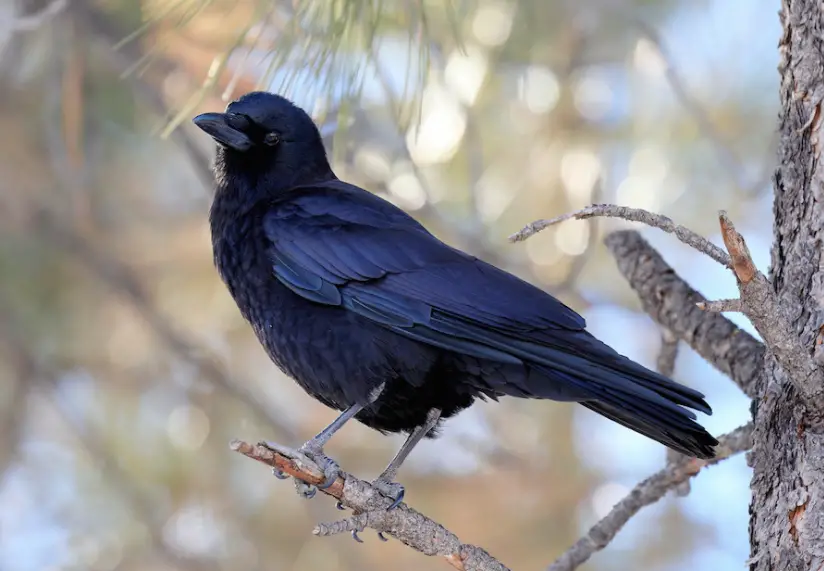
The American crow is a bird of the corvid family. Its scientific name is Corvus brachyrhynchos. The adult male American crow is all black with a glossy sheen to its feathers. It has a wingspan of about three feet and can weigh up to one and a half pounds.
The female American crow is similar in appearance to the male but is slightly smaller. American crows are very intelligent birds and are known for their problem-solving abilities. They have been known to use tools to help them with tasks such as getting food.
American crows are found throughout North America. In Nebraska, they can be found in open areas such as prairies, farmland, and parks.
American crows are omnivores and eat a variety of foods including insects, seeds, fruit, and garbage. They are known to be aggressive birds and will often attack other animals or humans that they perceive as a threat.
American crows typically live in large groups called flocks. These flocks can contain up to several hundred birds.

Other Birds in Nebraska
In addition, there are many other types of birds that can be found in Nebraska. Some of these include the Bald Eagle, Red-tailed Hawk, and Northern Cardinal.
Nebraska is home to a variety of different bird species. If you’re interested in seeing some of these birds up close, there are a number of places you can go in the state to do so. Some good options include nature preserves, wildlife refuges, and state parks.
Summer birds in Nebraska:
Warbler, vireo, oriole, managerl, grosbeak, finch, sparrow, meadowark, kingbird, etc.
What birds stay in Nebraska in winter?
Some of the birds that stay in Nebraska during winter are the Bald Eagle, Red-tailed Hawk, and Northern Cardinal. These birds can be found in a variety of different habitats throughout the state.
How to Attract Birds to Your Backyard in Nebraska?
If you’re interested in attracting birds to your backyard in Nebraska, there are a number of things you can do. Some good ideas include putting up a bird feeder, planting trees and shrubs, and providing a water source. If you provide a variety of different foods and habitats, you’ll be sure to attract a wide variety of birds. Nebraska is home to a number of different bird species, so you’ll be sure to see some interesting birds if you take the time to attract them to your backyard.
Black Oil Sunflower seeds:
Black Oil Sunflower seeds, Nyjer seed, and suet are some of the best foods to offer birds in your backyard. You can also put out a water source, such as a birdbath, for them to drink and bathe in.
Best Bird Feeders to Attract Birds in Nebraska:
There are a number of different types of bird feeders that you can use to attract birds to your backyard. Some good options include tube feeders, hopper feeders, and platform feeders. You’ll want to choose a bird feeder that is appropriate for the type of birds you’re hoping to attract.

An avid ornithologist, zoologist and biologist with an unwavering passion for birds and wild animals.
Dr. Wilson’s journey in ornithology began in childhood and led him to obtain a Ph.D. in Ornithology from the prestigious Avian Research Institute. He has worked closely with renowned experts in the field and conducted extensive research and field studies globally.

